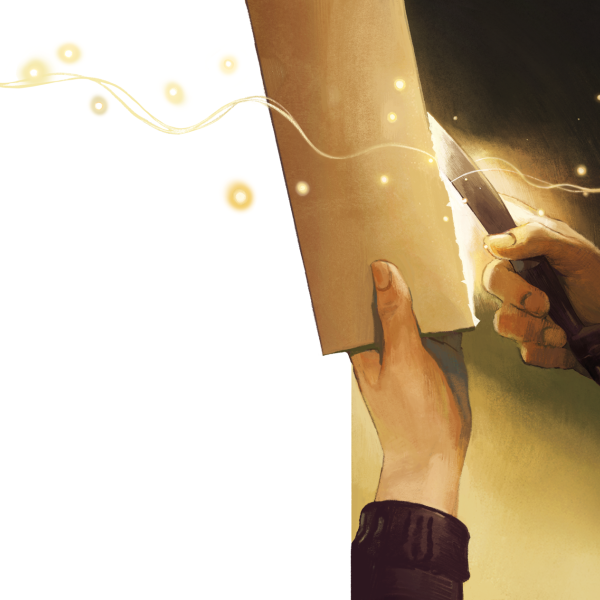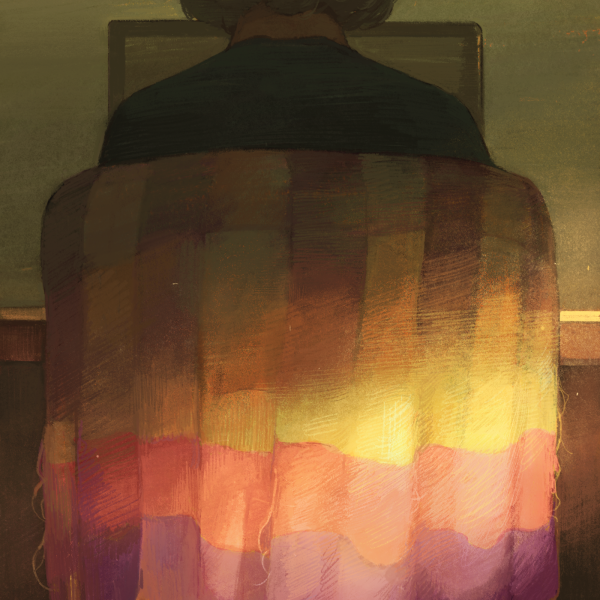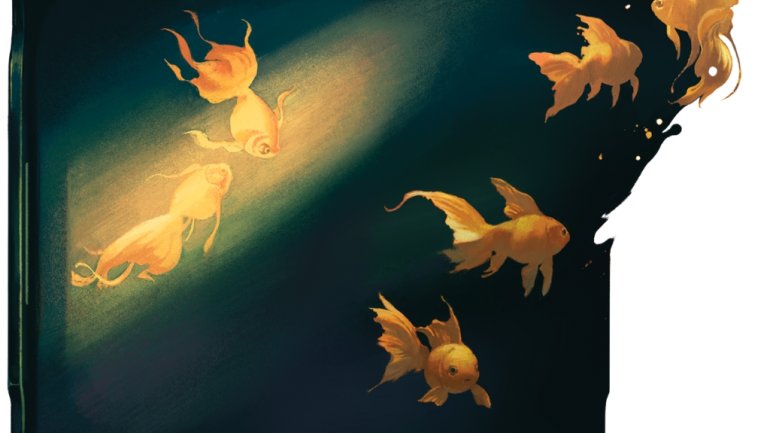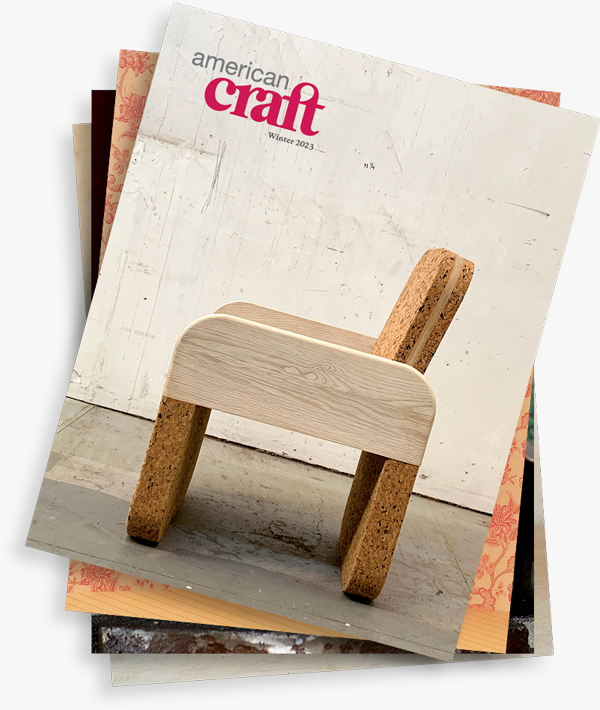The Objects We Keep
The Objects We Keep
As Sherry Turkle notes in her book Evocative Objects, “We find it familiar to consider objects as useful or aesthetic, as necessities or vain indulgences. We are on less familiar ground when we consider objects as companions to our emotional lives or as provocations to thought. The notion of evocative objects brings together these two less familiar ideas, underscoring the inseparability of thought and feeling in our relationship to things. We think with the objects we love; we love the objects we think with.” Turkle’s exploration of evocative objects as centerpieces of human thought and feeling ranges from objects of design and play (a cello, for example, the size of a human body, that enables its player to “make the conscious connection between thought and touch”) to an heirloom family rolling pin that helps a woman mourn her grandmother’s death as she rolls out cookies with her own children.
As weird and as counterintuitive as it may sound, our relationships within the inanimate world can often offer us a template for ways to absorb experience, conveying and clarifying to us ideas about our own humanity. Another way to think about that is to imagine that our objects can inhabit us, just as we inhabit them. In the course of my own life, an ebony letter opener, a woven shawl, and a lacquer tray have been among the things that qualify both as companions to emotional life and as provocations to thought.
The Letter Opener
Over 30 years ago, a psychiatrist I had been seeing gave me a letter opener as a parting gift. It was carved from ebony, a hardwood, and its blade was all but a knife edge. Its handle was a stylized carving of the long sloping neck and proud head of an antelope, with ears, tiny horns, wide eyes. It was an inexpensive object handcrafted by a local artisan, and I think I remember her saying she had picked it up on a trip to Kenya. But, as perhaps befits recollections with a therapist, the memory of its origins is a little clouded. The wood has become polished to a sheen over decades of use. I don’t think the blade has truly become sharper, though it sometimes seems that way. And the small, carved antelope head is as calm and remote as ever.
This object has grown on me. Out of curiosity once, I looked up ebony online and learned that its denseness makes it very difficult to carve, a fact that also renders it durable, enduring. And every time I use the letter opener, I think of my doctor and the way she listened, to the point at which the letter opener serves now as a little memento of her acute ability to hear. Over the years, then, it is inevitable that I have come to think of opening a letter as an act akin to coming upon a thought. The blade rips open the paper of the envelope. The letter itself slips out, is unfolded, the letters, words, thoughts, feelings revealed. Another small episode of discovery! The blade is a tool that allows for quick precision—be sharp!—then leads to quiet thought, to the gaze of the antelope, quiet, detached, yes, but one that still recalls something wild, perhaps a stampede that tore up the fields only moments before. The blade, the animal, the action, the thought—all of these converge in the moment, in the simple act of reading a letter.

Illustration by Hokyoung Kim.
Our objects can inhabit us, just as we inhabit them.
People write letters less often now, of course, than they once did. Perhaps this is why, on the occasions when I do employ it, I find myself especially attentive to its form, its material, the simple act of using it. When it is a letter I am opening, and not a bill or piece of business correspondence, I think of what it is to enter a thought of another. I note how this slender piece of carved black wood, a tourist item likely picked up at an airport souvenir shop, has come to serve as a kind of accessory for understanding. It reminds me that the things we use come to occupy our imaginations in different ways, and how the material and immaterial worlds coalesce unpredictably and unfathomably. Its meaning here has been derived from a collaboration of random circumstances, the kind of arbitrary and unpredictable conditions under which we form attachments. In this case, it was the durability of the wood itself, the symbol of the wild animal, the woman who gave it to me, all the years it has been on my desk. This is probably the way material things become accomplices in our emotional lives—and the way the lives of things, like the lives of people, can take on unexpected turns, new meanings and values. All of this may be a lot to assume about such a thin whittle of wood, but it is true nonetheless.

Illustration by Hokyoung Kim.
The Shawl
When I was in my mid-20s, I spent several months living in the foothills of California’s Sierra Nevada in a small town actually called Rough and Ready. My boyfriend and I were on our way to San Francisco but had stopped there so he could help some friends who were building a house. Our stay lasted weeks, then months. I was anxious to get to the city. Living on an unfinished building site was wearing on my nerves, and far too much alcohol was being consumed as well.
At some point during that time, my mother sent me a lush wool and mohair shawl that had been woven in Scotland. Its threads were radiant scarlet, purple, gold, fuchsia, glowing stripes and squares of luminous shades and hues, one laced into another and another. To be clear, these are not my colors, which tend more to dusky blues and grays. Still, the brightness and warmth the shawl lent to that cool California fall was welcome, and I came to love its warm palette, its comfort, its soft texture. It cheered me up greatly, and when we finally got to San Francisco, it was on the bed for the three years we stayed. Now, 40 years later, it is folded across the back of my office chair, thin, frayed, faded, but still shining with its glowing sunset palette.
Not long ago, a close friend sent me another, similar shawl. This one, too, was handwoven in Scotland, was also wool and mohair, and had the same soft feel. But the colors of its yarns ranged from azure to cobalt, with strands of smoky blues and pale grays intertwined. Finally, decades later, a palette of rivers and oceans, of the tides and currents! My colors! And I admire it every time I see it folded at the foot of a guest bed.
But still, the placeholder, the surrogate, the old radiant shawl remains on the back of my chair. It has gotten me to thinking about the value of the stand-in, and how it is possible to learn to live with things that are not our style—and then find suddenly that it, the proxy, has become more real, more central to our experience, than the desired object. How curious it is that the substitute can sometimes become the thing with which we end up having a deeper rapport, a more lasting affiliation. Which is another one of those things that living with objects can teach you.
The Lacquer Tray
Information comes to us in layers. Painters come to know this with the application of pigments, and writers, too, with the way words collect on a page; but then I suppose that anyone who has ever worked to master any discipline knows this as well. Lacquerwork, though, may be the discipline that expresses this truth most explicitly. The process requires that a coat of resin, extracted from the sap of a particular tree, be applied in layers, each one dried and polished to a high gloss before the next coating is applied. If there are to be images in the composition, the pigment is added in during the process. But it is the series of carefully prepared layers, 10, 12, 15, that give the piece its durability, its shine, its depth.
The small kitchen tray I have propped up on the counter is a product of this protracted process. There is something in the sequence of layers that gives the surface a genuine sense of dimension, and the five goldfish in the composition appear to be streaming not on, but in, the dark shining water suggested by the black surface of the tray. The sense of immersion is real.
And yet, in my well-lit kitchen, the images look a little garish—obvious, gaudy, a little too showy and loud. Of course it is so. Lacquerware was not made for bright rooms, and in such spaces it loses its beauty. In his celebrated essay, In Praise of Shadows, the Japanese writer Jun’ichirō Tanizaki writes that the value of lacquerwork is in the way it brings a glow to rooms with muted light. “Darkness is an indispensable element in the beauty of lacquerware,” he writes. “Artisans of old, when they finished their works in lacquer and decorated them in sparkling patterns, must surely have had in mind dark rooms and sought to turn to good effect what feeble light there was.” It is easy to imagine that in a dusky, shadowy room, the sheen of the goldfish in their opaque pond could suggest flickers of light that become apparent only in obscurity. The tray is among those things that come to life only in darkness, a circumstance useful to remember.
Discover More Inspiring Artists in Our Magazine
Become a member to get a subscription to American Craft magazine and experience the work of artists who are defining the craft movement today.


